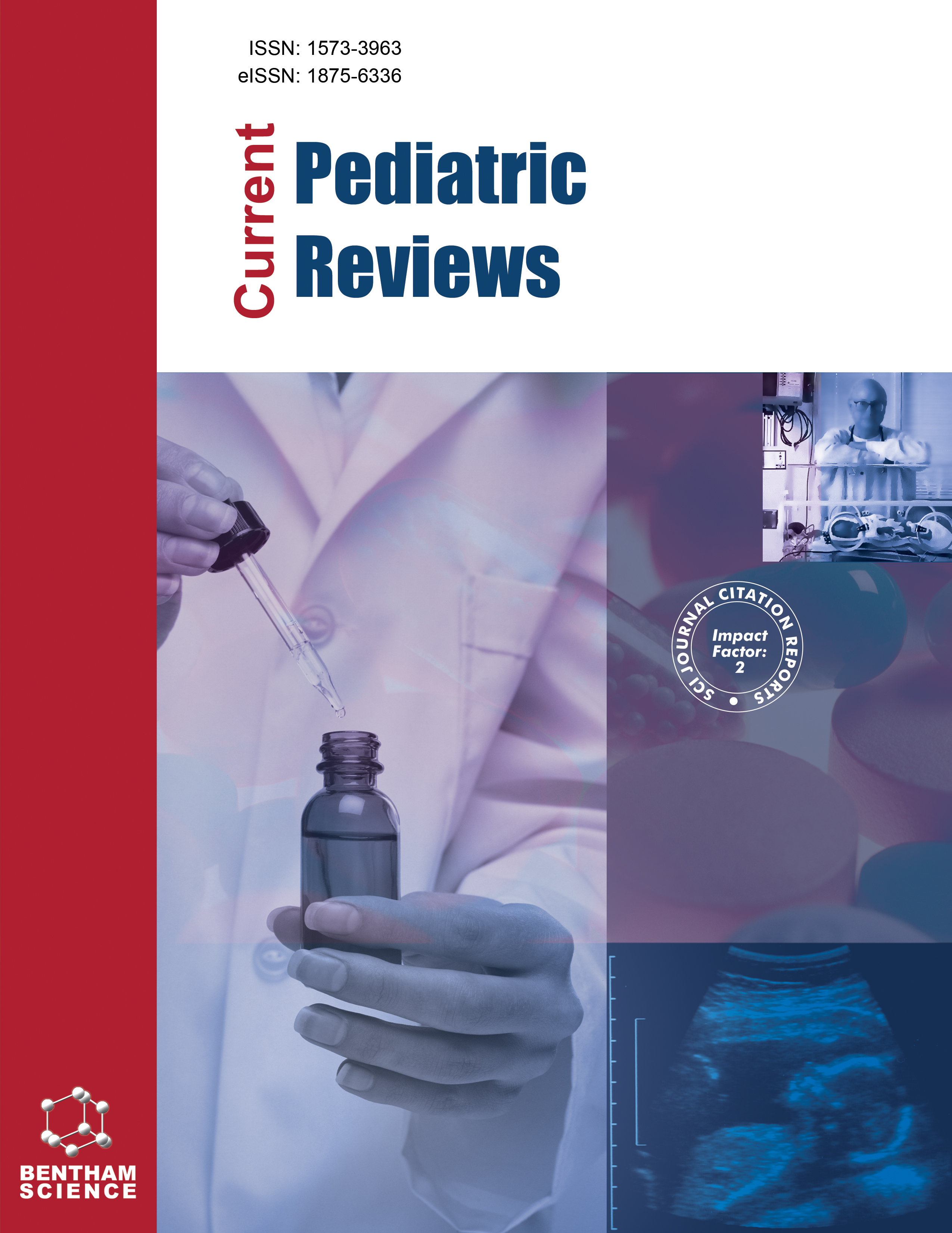- Home
- A-Z Publications
- Current Pediatric Reviews
- Previous Issues
- Volume 11, Issue 3, 2015
Current Pediatric Reviews - Volume 11, Issue 3, 2015
Volume 11, Issue 3, 2015
-
-
Diagnostic Imaging of Fetal and Neonatal Abdominal and Soft Tissue Tumors
More LessAuthors: Usha D. Nagaraj and Beth M. Kline-FathImaging plays a key role in the diagnosis and staging of prenatal and neonatal tumors, and is essential in treatment planning. Though obstetrical ultrasound is the first choice prenatally, fetal MRI continues to play an increasing role as experience with this imaging modality increases. In the neonate, in addition to ultrasound and MRI, CT and nuclear medicine studies can also play an important role. We describe the prenatal a Read More
-
-
-
Perinatal Management of Fetal Tumors
More LessAuthors: Jose L. Peiro, Lourenco Sbragia, Federico Scorletti and Foong Y. LimProgress in the last three decades in prenatal genetic diagnosis and advancement in prenatal imaging and characterization of fetal anomalies have allowed better preparation in family counseling and afforded the opportunity to consider prenatal treatment for congenital defects that would have fatal outcomes, among them the fetal tumors. Advances in fetal therapy and surgical approaches including minimally invasive procedur Read More
-
-
-
Genetic Predisposition to Neonatal Tumors
More LessAuthors: Emily Quinn, Rose McGee, Regina Nuccio, Alberto S. Pappo and Kim E. NicholsThe development of tumors within the first month of life is extremely rare and this very young age at presentation should raise concern for an underlying cancer predisposition syndrome. This chapter discusses genetic predisposition to neonatal solid tumors, specifically those involving the eyes, kidneys, liver, adrenal glands and lungs. For each tumor type, we discuss the most common associated predisposition syndromes Read More
-
-
-
Current Management of Neonatal Neuroblastoma
More LessAuthors: Rodrigo B. Interiano and Andrew M. DavidoffNeonatal neuroblastoma accounts for less than 5% of all cases of neuroblastoma but carries a favorable prognosis with most patients being stratified into low- or intermediate-risk groups for recurrence of disease. The epidemiology of neonatal (age less than 30 days) neuroblastoma contrasts greatly with patients older than 30 days. Owing to the unique potential for spontaneous regression of this tumor type, several Read More
-
-
-
Current Management of Fetal and Neonatal Renal Tumors
More LessAuthors: Michael Berger and Dietrich von SchweinitzFetal and neonatal renal tumors are rare. Nevertheless, in-depth understanding of their features can lead to early recognition and appropriate treatment, ultimately benefiting outcome. Despite the many obvious similarities, important distinctions exist between these tumors and their counterparts in older children. Likewise, some important distinctions exist between fetal tumors on the one hand and neonatal tumors o Read More
-
-
-
Current Management of Neonatal Liver Tumors
More LessAuthors: Max R. Langham, Wayne L. Furman and Israel Fernandez-PinedaThis review is focused on the special issues and challenges confronting physicians and surgeons caring for an unborn child, or a newborn with a liver tumor. Liver tumors at this age are very rare and they make it difficult for pediatric surgeons to gain experience necessary to obtain good results. On the other hand, adult hepatobiliary surgeons faced with a fetus or infant with a liver mass are ill equipped to care for the pati Read More
-
-
-
Neonatal Germ Cell Tumors
More LessAuthors: John A. Sandoval and Regan F. WilliamsExcluding hemangiomas, germ cell tumors (GCTs) are the most common neoplasm in neonates, comprising a wide range of benign and malignant tumors with unique histological diversity. Although these tumors are relatively rare, antenatal ultrasonography has increased their detection before birth. Extragonadal GCTs (EGCTs) are the most common GCTs in neonates, with sacrococcygeal teratomas (SCTs) being the most prevale Read More
-
-
-
Current Management of Neonatal Soft-tissue Sarcomas and Benign Tumors with Local Aggressiveness
More LessAuthors: Israel Fernandez-Pineda, Michael D. Neel and Bhaskar N. RaoNeonatal soft-tissue tumors are rare and comprise a heterogeneous group of neoplasms with substantial histological diversity. Treatment options include careful observation, primary surgical resection or medical therapy. Although histologically benign, some neoplasms do exhibit an aggressive local behavior. The most common soft-tissue sarcomas in this age group include rhabdomyosarcoma, fibrosarcoma, malignant rhabdoid Read More
-
-
-
Current Management of Vascular Tumors in the Neonate
More LessNeonatal vascular tumours present particular difficulties in their diagnosis and treatment. The special behaviour of neonatal hemangioma and the aggressive but benign nature of kaposiform hemangioendothelioma provide examples of a modern need for a conservative approach. Recent advances in their pharmacological management have dramatically changed the therapeutical scope of this group of tumors with surger Read More
-
Volumes & issues
-
Volume 21 (2025)
-
Volume 20 (2024)
-
Volume 19 (2023)
-
Volume 18 (2022)
-
Volume 17 (2021)
-
Volume 16 (2020)
-
Volume 15 (2019)
-
Volume 14 (2018)
-
Volume 13 (2017)
-
Volume 12 (2016)
-
Volume 11 (2015)
-
Volume 10 (2014)
-
Volume 9 (2013)
-
Volume 8 (2012)
-
Volume 7 (2011)
-
Volume 6 (2010)
-
Volume 5 (2009)
-
Volume 4 (2008)
-
Volume 3 (2007)
-
Volume 2 (2006)
-
Volume 1 (2005)
Most Read This Month
Article
content/journals/cpr
Journal
10
5
false
en


